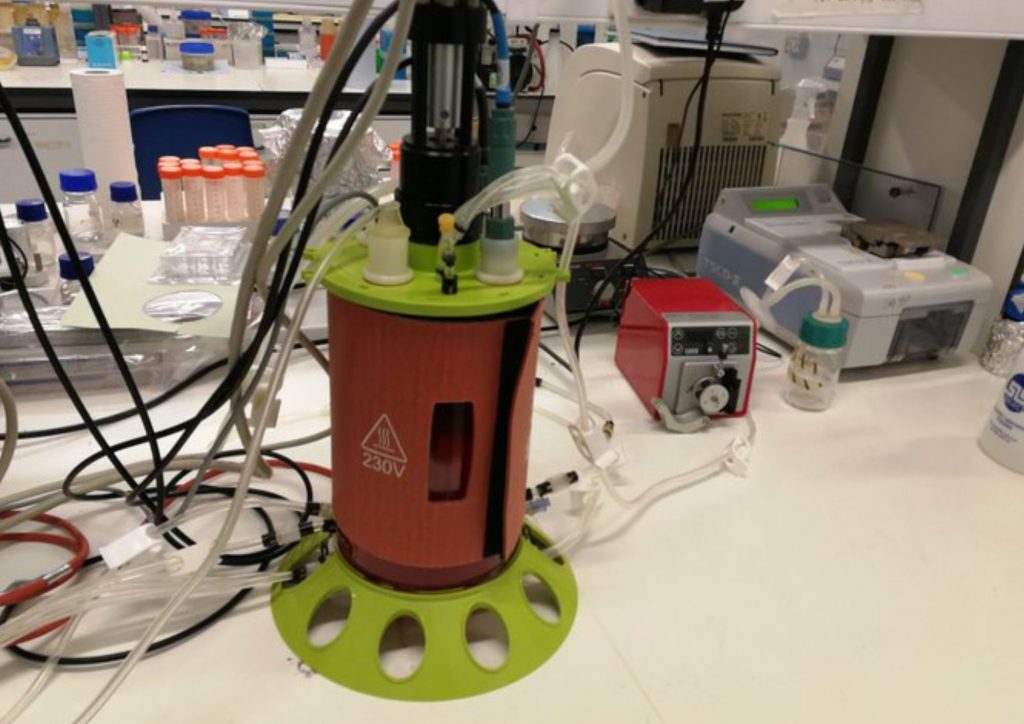STEAM: If you look in the lab, there’s some dinner in there for you
Could you one day eat meat without the need to kill an animal?
Saturday, 17th June 2023 — By Anna Lamche

Dr Petra Hanga
IN the future scientists will be able to grow an entire steak – complete with meat, cartilage and fat – without killing a single cow.
UCL academic Dr Petra Hanga predicted chicken legs and fish will also be on the menu, and more unusual options like kangaroo meat.
In each case, no animal will die to end up on someone’s plate.
Dr Hanga, a biochemical engineer, is working with a team of scientists at a UCL lab to pioneer “cultured”, or lab-grown, meat.
According to Dr Hanga, the process of creating cultivated meat begins with taking a cell sample, or biopsy, from an animal. This procedure is painless and does the animal no harm. From this sample, stem cells can be extracted and used to grow muscle cells.
“Then you have cultivated meat, and that includes fish and seafood,” she said. The process can make both “structured” and “unstructured” meats. The former produces meat like textured steak and chicken legs; the latter is “more like minced meat that you can then process and cook as usual,” the lecturer said. “It’s the same genuine meat – cultivated meat is genuine meat, just produced in a different way. It will have the same composition of meat that comes from the animal, the same taste, the same nutritional value.”
“Structured” meats take longer to form, and require a “scaffold” to mould the tissue into the desired shape, while “unstructured” meats can be grown more quickly. And now research teams across the world are getting creative.

A delicacy being made in the lab
Dr Hanga said: “Across the globe, there are companies that are targeting anything that you can think of – there’s a start-up that is looking at producing kangaroo meat. There are even start-ups looking to make meat for pet foods,” she said. Australian food engineers at company Vow Food hit the headlines earlier this year with their creation of a “mammoth meatball” using DNA from a woolly mammoth – a species that died out roughly 4,000 years ago – in an attempt to recreate its muscle protein.
Although Dr Hanga has been working on developing cultured meat for several years, she is yet to taste any of it. “It’s only available in Singapore. So far there’s only one cultured meat product [on the market], which is cultured chicken,” she said.
It will be a long time before cultured meat arrives in the UK because of the strict rules surrounding regulatory approval, Dr Hanga said.
The research nevertheless will appeal to animal rights campaigners and environmentalists alike. Billions of animals are slaughtered annually across the globe for human consumption.
At this scale, the animals belch vast quantities of methane into the atmosphere – a greenhouse gas that is far more potent than carbon dioxide.
“My motivation is the animals and the environment,” Dr Hanga said. “I know that there are fears from the farming community, because that would mean for them to lose all their jobs. I think at the end of the day, this new industry will not be able to replace animal agriculture completely because we just do not have the capacity, but even by reducing 10 per cent of the animal meat production worldwide, the effects on climate and animals will be significant.”